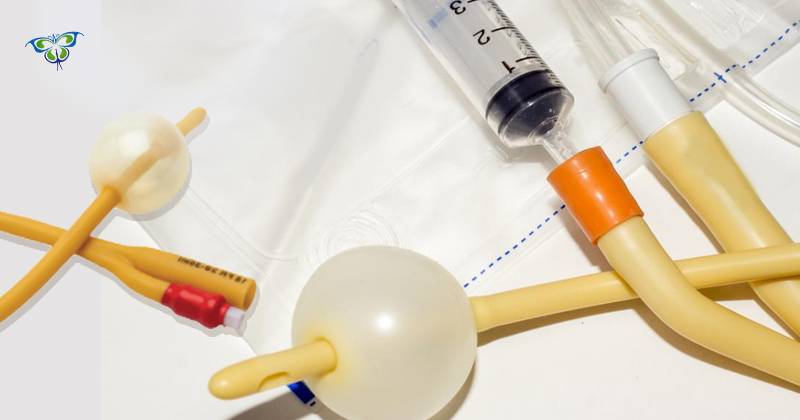
Hello
Select Address

Urology is well-known healthcare dealing with diseases of the urinary tract in males, females, and children as well. In urology, catheters play a special role in collecting urine from the bladder and taking it to the drainage bag. They come in different sizes and types and are made of rubber, silicone or PVC.
Doctors recommend the usage of catheters for three broad reasons:
Catheters are divided into three main types: Indwelling catheters, short term catheters, and external catheters.
Indwelling or Foley catheters:
These catheters are semi-rigid, flexible tubes. These reside in the bladder and are used for both long and short terms.
Foley catheters are named after Frederic Foley who crafted the original design in 1929. The catheters consist of a long tube. One end of the catheters come equipped with a small water-filled balloon for it to stay in place.
To the other end, there are two or three connectors. One connector has drainage bags attached to collect urine similar to an ostomy pouch.
Based on the number of connectors (lumen) at the collection end, catheters are of two types:
Two-way Foley catheter in detail:
Two-way foley catheters are usually produced using silicone or coated natural latex. The coating also includes a hydrogel, silicone elastomer or polytetrafluoroethylene. How long the catheter is to last, a month or 3-months depends on the type of coating.
Size: Two-way catheters come in respective sizes and are measured in French units (Fr). 1Fr is equivalent to 0.33 mm. The French units are roughly equal to the catheter circumference in mm. Each size is color-coded at the balloon inflation site for identification, as such:
For adult men, the average catheter size is 14Fr to 16Fr. For women, it ranges from 10Fr to 12Fr.
Two-way Foley Catheterization:
Before insertion, medical personnel cleans the surrounding area with antiseptic liquid. The catheter is itself lubricated in water-soluble jelly for easy passage. After insertion, the balloon that goes inside the bladder is inflated with 10cc of water using a syringe.
Caring for your two-way Foley catheter:
It is important to maintain a hygienic catheter to avoid complications and infections. Compared to other catheters, indwelling ones go inside of your body and must be given extra care. Few things are to be considered when using an indwelling Foley catheter:
- The place where the catheter exits the body, keeping that area clean.
- To prevent infection, drinking sufficient fluids.
- Maintaining hand hygiene before and after cleaning catheters.
Indwelling two-way Foley catheters are a revolutionary discovery counting its benefits. Urological disorders can be easily handled by doctors and patients with catheters as such. The simple and functional design has made it useful in various medical procedures.
Urology is a well-known healthcare dealing with diseases of the urinary tract in males, females, and children as well.
In urology, catheters play a special role in collecting urine from the bladder and taking it to the drainage bag. They come in different sizes and types and are made of rubber, silicone or PVC.
Doctors recommend the usage of catheters for three broad reasons:
Catheters are divided into three main types: Indwelling catheters, short term catheters, and external catheters.
Indwelling or Foley catheters:
These catheters are semi-rigid, flexible tubes. These reside in the bladder and are used for both long and short terms.
Foley catheters are named after Frederic Foley who crafted the original design in 1929.
The catheters consist of a long tube. One end of the catheters come equipped with a small water-filled balloon for it to stay in place.
To the other end, there are two or three connectors. One connector has drainage bags attached to collect urine similar to an ostomy pouch.
Based on the number of connectors (lumen) at the collection end, catheters are of two types:
These tubes are radiopaque to make it easier to locate while scanning.
Two-way Foley catheter in detail:
Two-way foley catheters are usually produced using silicone or coated natural latex. The coating also includes a hydrogel, silicone elastomer or polytetrafluoroethylene.
How long the catheter is to last, a month or 3-months depends on the type of coating.
Size: Two-way catheters come in respective sizes and are measured in French units (Fr). 1Fr is equivalent to 0.33 mm. The French units are roughly equal to the catheter circumference in mm.
Each size is color-coded at the balloon inflation site for identification, as such:
For adult men, the average catheter size is 14Fr to 16Fr. For women, it ranges from 10Fr to 12Fr.
Two-way Foley Catheterization:
Before insertion, medical personnel cleans the surrounding area with antiseptic liquid. The catheter is itself lubricated in water-soluble jelly for easy passage. After insertion, the balloon that goes inside the bladder is inflated with 10cc of water using a syringe.
Caring for your two-way Foley catheter:
It is important to maintain a hygienic catheter to avoid complications and infections. Compared to other catheters, indwelling ones go inside of your body and must be given extra care. Few things are to be considered when using an indwelling Foley catheter:
- The place where the catheter exits the body, keeping that area clean.
- To prevent infection, drinking sufficient fluids.
- Maintaining hand hygiene before and after cleaning catheters.
Indwelling two-way Foley catheters are a revolutionary discovery counting its benefits. Urological disorders can be easily handled by doctors and patients with catheters as such. The simple and functional design has made it useful in various medical procedures.
Validate your login
Sign In
Create New Account